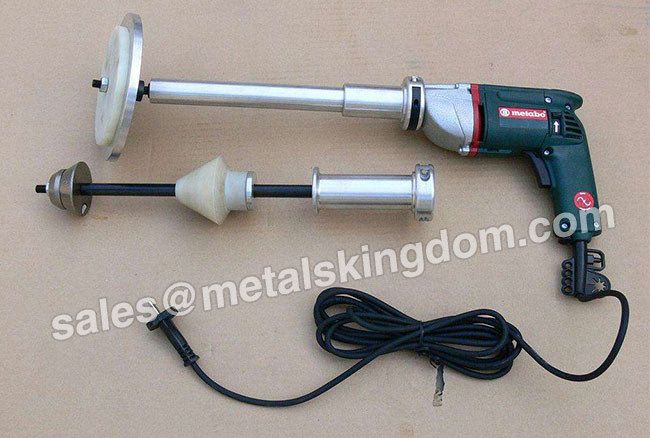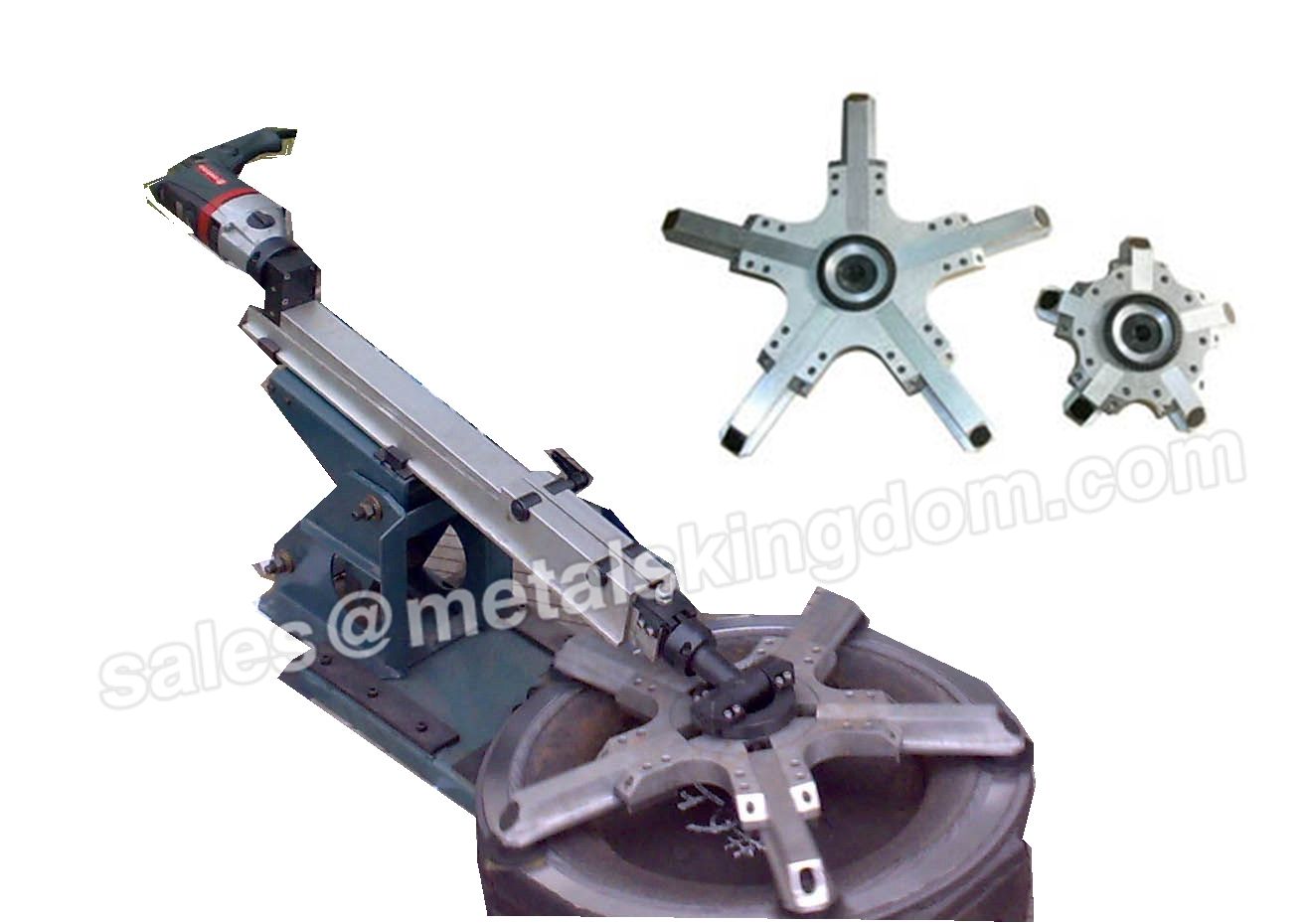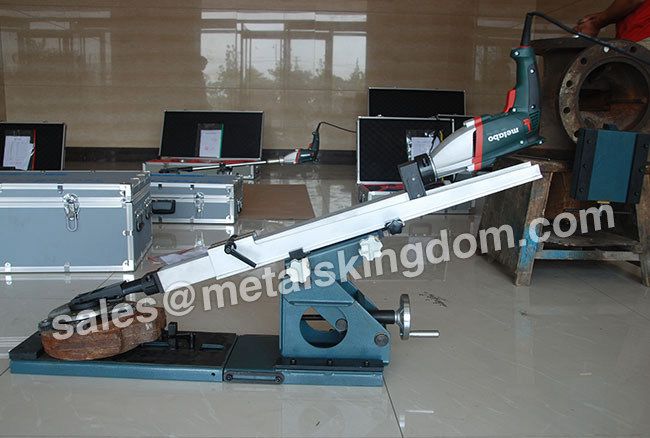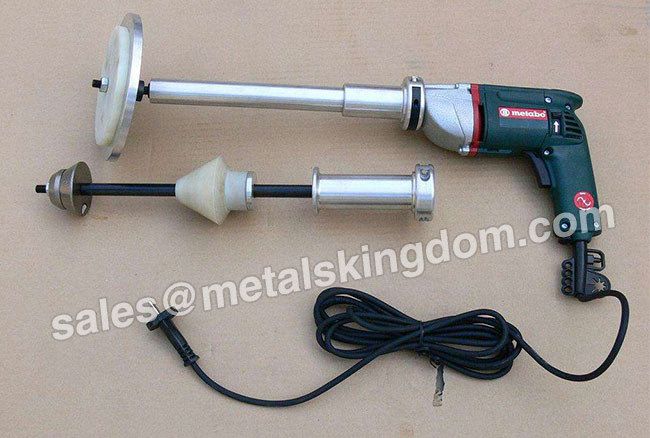In this comprehensive guide, we'll delve into the intricacies of industrial valve maintenance and repair, including valve grinding and valve lapping. Whether you're a seasoned professional or just starting in the field, this guide will provide you with valuable insights into keeping your valves in optimal condition. We'll cover the repair and maintenance of various types of valves, including gate valves, globe valves, pressure relief valves, safety valves, check valves, ball valves, parallel slide valves, wedge valves, and diaphragm valves. Additionally, we'll highlight our company's over 30 years of service to the industry, showcasing our expertise and commitment to excellence. So, let's dive in and explore the world of industrial valve maintenance and repair!
Repair and Maintenance of Gate Valve
Gate valves play a crucial role in piping systems, regulating fluid flow across various industries. They are recognized for their ability to create a secure seal and withstand high pressures and temperatures.
However, similar to other components in a piping system, gate valves need routine maintenance to ensure optimal performance.
Prior to commencing any repair or maintenance work on a gate valve, it is imperative to release the system of any pressure. This precautionary measure helps prevent injuries, losses, and environmental harm.
Once the pressure has been relieved, the subsequent maintenance procedures can be executed:
Over time, the valve seat and disc may become rough and corroded, resulting in inadequate sealing and fluid leakage.
Valve lapping, which involves utilizing a lapping machine to smooth out the valve seat and disc, is crucial for enhancing a secure seal when the valve is closed. This process is vital for the efficient operation of the gate valve.
Regular lubrication is another essential maintenance procedure. The gate valve stem threads and stem nut should be lubricated to minimize friction, wear, and facilitate easy opening and closing of the valve.
Lubrication can be carried out using a grease gun.
The valve packing is responsible for preventing fluid leakage between the valve stem and bonnet.
It is important to adjust the valve packing regularly, at least once a month, or as per the manufacturer's recommendations, to ensure it is neither too tight nor too loose.
Gate valves can get obstructed with debris and other foreign materials, leading to blockages and decreased fluid pressure. Regular cleaning of the valve seat, disc, entry, and exit ports is necessary to prevent fluid blockages.
The connection between the bonnet and body is a critical aspect of the gate valve, and it must be secure to prevent fluid leakage. Bolts and nuts should be tightened to the torque specified by the gate valve manufacturer.
If the gate valve disc fails to effectively stop the fluid flow, it may be necessary to replace the disc. To replace the disc, follow the manufacturer's guidelines carefully.
If the gate valve disc fails to effectively halt the flow of fluid, it may be imperative to substitute the disc. In order to accomplish this replacement, it would be essential to unlatch the valve bonnet to gain entry to the valve's interior.
Troubleshooting gate valves
Leaking: Check the valve seat and replace if worn. Inspect the gate for damage and replace if necessary. Check for debris in the valve body and clean if necessary.
Sticking: Clean the valve and lubricate the stem and gate to ensure smooth operation. Check for misalignment and adjust if needed.
Gate alignment: Check the alignment of the gate with the seat to prevent leakage. Adjust the alignment if necessary.
No fluid flows through the valve: The valve is blocked. Disassemble the valve and remove foreign materials from the valve. Worn-out gate. Replace the gate.
Repair and Maintenance of Globe Valve
Globe valves are widely used for their excellent throttling capabilities. Regular maintenance is crucial to ensure optimal performance. Here's a comprehensive overview of globe valve repair and maintenance:
Valve Grinding: Regularly perform valve grinding using a grinding machine to achieve a dense, flat surface. This procedure smoothens seals and seats, ensuring perfect and tight seals.
Valve Stem Lubrication: Frequent lubrication of the valve stem reduces wear and enhances smooth operation without requiring high torque to open or close.
Cleaning: Periodically open the globe valve bonnet to clean off scales or residue accumulating inside the bonnet and valve body to prevent blockages. Inspect the valve seat and disc during cleaning and replace them if worn out.
Gland Packing Replacement: Replace the gland packing after a certain period of use or as recommended by the manufacturer to avoid leakage.
Seal and O-ring Inspection: Disassemble the globe valve to inspect and replace the seals and O-rings as necessary.
Bolt and Nut Replacement: Replace worn-out bolts and nuts on the bonnet and pipe-body connections. New bolts and nuts ensure tight connections, preventing leakage and potential fluid losses.
Body Cleaning: Clean any accumulation on the valve body using suitable cleaning solutions to maintain optimal performance.
Troubleshooting globe valve
Reduced flow: Check for obstructions in the valve body and clean if necessary. Inspect the valve seat and replace if worn. Check for debris in the valve body and clean if necessary.
Leakage: Inspect the valve body and bonnet for signs of leakage and repair as necessary. Replace the valve seat and stem seals if worn.
Sticking: Clean the valve and lubricate the stem and disc to ensure smooth operation. Check for misalignment and adjust if needed.
Repair and Maintenance of Pressure Relief Valve
Pressure relief valves are crucial for maintaining safe operating conditions in a system. Regular maintenance is vital to ensure they function correctly when needed. Here's how to maintain pressure relief valves:
Regular inspection: Inspect the valve regularly for signs of wear and tear.
Corrosion Check: Regularly inspect valves for signs of corrosion. Replace corroded parts promptly to ensure optimal performance.
Component Cleaning: Clean internal valve components to remove debris and moisture that could affect functionality. Avoid excessive cleaning to prevent damage to precision parts.
Periodic Grinding: Periodically grind valves to remove oxidation from seats and discs, ensuring a perfect seal when the valve closes.
Grease Removal: Remove residual grease to prevent dirt buildup and valve contamination.
Pressure Setting: Pressure relief valves are designed to operate at specific pressure levels. Avoid readjusting or tampering with the pressure settings to maintain optimal performance.
Seat Replacement: Replace or grind valve seats if they cause fluid leakage.
Weather Cap: The weather cap protects valves from ice, snow, rain, insects, debris, and pollution. Replace any lost or damaged weather caps.
Spring Maintenance: Springs exposed to saltwater, industrial pollutants, and chemicals may deteriorate over time. Replace springs with cracked or damaged coatings to prevent failures.
Drainage Hole Check: Inspect drainage holes regularly and remove any paint, dirt, ice, or other debris that may hinder proper drainage.
Troubleshooting Pressure Relief Valve
Will not open: Check for debris or corrosion and clean or replace valve as necessary. Check whether there is any debris in the valve body and clean it if necessary.
Unable to close: Check the valve for damage and repair or replace if necessary. Check for misalignment and adjust if necessary.
Leakage: Check the valve body and bonnet for signs of leakage and repair as necessary. Check seals for wear or damage and replace or grind them.
Repair and Maintenance of Safety valve
Safety valves are designed to release excess pressure and protect equipment from damage. Regular maintenance is essential to ensure their proper operation. Here's what you need to know about safety valve maintenance:
Regular Calibration: Regularly calibrate valves to improve their reliability and sensitivity. Calibration ensures valves operate within the desired pressure range.
Body Cleaning: Clean valve bodies to remove grease and dirt.
Check Lead Seals: Ensure lead seals are intact to prevent the safety valve's hammer from shifting or loosening.
Valve Disc and Seat Overlapping: Overlapping the valve disc and seat enhances perfect and tight sealing.
Spring Replacement: Replace valve springs that have corroded due to contact with industrial chemicals, saltwater, and dirt. Corrosion reduces spring strength and may increase errors in valve settings, leading to incorrect pressure values.
Repair Leaking Safety Valves: When safety valves start leaking, repair them by replacing worn-out seals and O-rings.
Inspect Valve Disc: Replace the valve disc if it is worn.
Check Bolt Tightening Torque: Adjust bolt tightening torque if bolts are too tight or too loose.
Troubleshooting safety valve
Unable to open: Check for obstructions and clean the valve. Check whether there is any debris in the valve body and clean it if necessary.
Leakage: Check the valve body and bonnet for signs of leakage and grind to repair as necessary. If worn, replace the valve seat and stem seal.
Stuck: Clean valves and lubricate moving parts to ensure smooth operation. Check for misalignment and adjust if necessary. The diameter of the water inlet pipe is too small. Use a larger inlet diameter or reduce inlet tube resistance.
Repair and Maintenance of Check valve/non-return valve
Check valves are used to prevent reverse flow in a system. Regular maintenance is necessary to ensure they function correctly. Here's a look at check valve repair and maintenance:
Grinding Operation: Perform a grinding operation on the valve seat to remove any defects that may affect valve closure.
Lubrication: Regularly lubricate the moving disc hinge pin to reduce friction, wear, and enhance effectiveness during operation.
Gasket Inspection: Check and replace the gasket after a certain period of use to prevent leaks caused by pressure from the body-bonnet connecting bolts.
Seat Replacement or Lapping: Replace or lap the valve seat to ensure a tight seal between the body and the disc, preventing leakage or backflow.
Bolt Tightening: Regularly tighten the bolts connecting the body and the bonnet, as well as the bolts connecting the valve to the pipe, to prevent fluid leakage at the joints.
Troubleshooting check valve
Valve Disk Does Not Open:
Incorrect Installation: Ensure the valve is installed in the correct direction according to the arrow on the valve body or manufacturer's instructions.
Low Suction Pressure: Increase fluid flow pressure to create a higher force to open the valve disk.
Closed Downstream Valve: Open the downstream valve.
Reverse Fluid Flow:
Stuck Open Disk: Remove any foreign materials obstructing the valve disk from returning to the valve seat.
Worn-out Valve Seat: Replace or lap the valve seat.
Debris on Valve Seat: Open the valve, remove the bonnet, and clean off any debris on the valve seat.
Fluid Leakage:
Worn-out Gasket: Replace the gasket.
Loose Connection: Tighten the bolts and nuts connecting the valve body, bonnet, and pipe. Avoid excessive tightening to prevent damage.
Valve Vibrates During Use:
High Fluid Velocity: Ensure the flow velocity is within the manufacturer's recommended range.
Regular maintenance and troubleshooting can help resolve common check valve issues and ensure optimal performance.
Repair and Maintenance of Ball valve
Ball valves are known for their reliability and ease of operation. However, they require regular maintenance to ensure optimal performance. Here's how to maintain ball valves:
Bolt and Nut Tightness: Regularly check the tightness of bolts and nuts, and tighten them if loose. Use the torque recommended by the manufacturer to avoid damaging the bolts, nuts, and valve flanges.
Lubrication: Frequent lubrication of the valve is essential to prevent abrasion wear on the ball during opening and closing. Proper lubrication also ensures smooth operation and improves sealing effectiveness.
Grinding Operation: Regularly grind the valve ball and seat to ensure a smooth surface for a tight seal when the valve closes.
Interior Inspection: Periodically open the valve and inspect the interior. Replace or lap the ball valve and/or seat if worn or damaged. Clean any materials sticking to the valve body to maintain optimal performance.
Seal and Gasket Inspection: Inspect seals and gaskets regularly and replace them if worn or damaged to prevent leaks.
Troubleshooting ball valves
Difficult Operation:
Solids Clogged in Valve: Open the valve bonnet and clean out any solids that may be causing obstruction.
Corrosion Inside Valve: Remove corrosion scales from inside the valve.
External Fluid Leakage:
Loose Connection with Pipe: Tighten bolts and nuts to the torque recommended by the valve manufacturer.
Loose Connection Between Body and Bonnet: Tighten bolts and nuts.
Worn-out Gasket: Replace the gasket.
Excess Fluid Pressure: Ensure fluid pressure is within the recommended range.
Internal Fluid Leakage:
Difficult to Open/Close:
Noisy Operation:
High Fluid Velocity: Reduce fluid velocity.
Wrong Valve Sizing: Replace the valve with a higher-rated valve.
Regular maintenance and troubleshooting can help resolve common ball valve issues and ensure optimal performance.
Repair and Maintenance of Parallel slide valve
Valve Grinding:
Lubrication:
Lubricate moving parts such as the yoke sleeve and stem to reduce wear and friction. Proper lubrication also reduces the energy required to open or close the valve.
For actuated valves, lubricate actuator moving parts such as drive sleeves for motor actuators and sliding surfaces for hydraulic/pneumatic actuators.
Internal Component Cleaning:
Clean internal components of the valve, including the stem, body, bonnet, and packing area, to remove solids and contamination that may reduce fluid pressure or cause blockages in fluid flow.
Bolt and Nut Tightening:
Packing and Stuffing Box Adjustment:
Regular maintenance and proper lubrication are essential for ensuring the longevity and efficiency of valves.
Troubleshooting parallel slide valve
Leakage Through the Packing Chamber:
Tighten Loose Bolts: Evenly tighten the bolts.
Insufficient Packing: Increase the amount of packing rings.
Damaged Packing Chamber or Worn-out Packing: Replace with new packing.
Stem Damage: Replace or repair the stem as necessary.
Leakage Through the Sealing:
Worn-out Seals: Replace the seals.
Dirt Accumulation on the Sealing Surface: Clean off the dirt.
Excess Fluid Pressure: Reduce fluid pressure.
Hard-to-Operate Hand Wheel:
Packing Too Tight: Adjust the packing torque.
Worn-out Stem Threads: Replace the stem.
Dirt Accumulation Between the Stem and Gland: Remove the dirt.
Fluid Flow When the Valve is Closed:
Repair and Maintenance of Wedge valve
Wedge valves are often used in high-pressure applications where tight shut-off is required. Regular maintenance is essential to prevent issues and ensure reliable operation. Here's a look at wedge valve repair and maintenance:
Valve Seat and Disc Maintenance:
Gland Adjustment:
Valve Stem Lubrication:
Stuffing Box Gasket Inspection:
Internal Component Cleaning:
Periodically open the valve and clean internal components such as seals, O-rings, bonnet, and body to remove dirt, corrosion, impurities, and foreign materials that may cause blockages. Also, inspect and replace the valve seat and disc if worn out.
Bonnet Gasket Inspection:
Bolting Torque Inspection:
Regularly inspect bolting torque and tighten loose bolts, avoiding excess torque that may damage the gasket, bolts, and nuts.
Troubleshooting wedge valve
Internal Leakage:
External Leakage:
Loose Bolts: Tighten bolts and nuts.
Worn-out Gasket: Replace the gasket.
Excess Fluid Pressure: Reduce the fluid pressure or use a higher-rated valve.
Hard-to-Rotate Handwheel:
Valve Does Not Open/Close the Fluid Flow:
Worn-out/Damaged Disc: Replace the disc.
Repair and Maintenance of Diaphragm valve
Diaphragm valves are widely used for their ability to handle corrosive and abrasive fluids. Proper maintenance is essential to prevent issues and ensure reliable operation. Here's how to maintain diaphragm valves:
Grinding Operation:
Cleaning:
Diaphragm and Linings Inspection:
Body, Seat, and Bolts Inspection:
Body-Bonnet Bolts Inspection:
Valve Stem Lubrication:
Lubricate the valve stem regularly to reduce wear and operating torque.
Troubleshooting diaphragm valve
No Fluid Flow Through the Diaphragm Valve:
Leakage Between the Valve and the Pipe:
Tighten the bolts evenly if they are loose.
Replace the worn-out gasket or lining.
Ensure proper centering of the valve to the pipe.
Difficult to Operate the Valve:
Clean any dirt on the stem.
Replace the stem if the threads are worn out.
Remove any foreign materials trapped between the diaphragm and the body.
High Fluid Pressure:
Over 30 years of valve grinder manufacturing experience
With over 30 years of industry experience, we have honed our skills and expertise to offer the finest quality Valve Grinder. Our valve grinders are dedicated to ensuring your valves are operating at peak performance, minimizing downtime and maximizing efficiency.
Contact us
For all your industrial valve maintenance and repair needs, contact us today. Our team of experts is ready to assist you with the highest level of service and professionalism.












